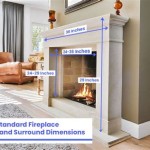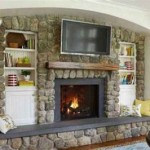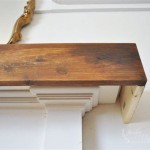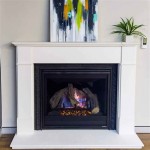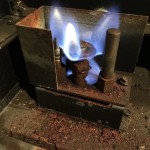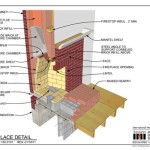Understanding the Fireplace Pilot Light: A Comprehensive Guide
The fireplace pilot light, a small but crucial flame, serves as the ignition source for the main burner in gas fireplaces. Its consistent presence ensures that the fireplace can be readily activated, providing warmth and ambiance with minimal delay. While seemingly simple, the proper functioning of the pilot light involves several key components and a delicate balance of gas flow and air mixture. Understanding the workings of the pilot light, recognizing potential issues, and applying preventative measures are essential for maintaining a safe and efficient fireplace.
The purpose of this article is to provide a comprehensive overview of the fireplace pilot light, detailing its function, common problems, troubleshooting steps, and safety considerations. By examining each aspect in detail, homeowners and fireplace technicians alike can gain a deeper understanding of this vital component and ensure its optimal performance.
Function and Components of the Fireplace Pilot Light System
The pilot light system is an integral part of a gas fireplace, designed to provide a continuous, small flame that allows for immediate ignition of the main burner when heat is needed. The system comprises several important components working in coordination.
The pilot light itself is a small, constantly burning flame, typically blue in color, located near the main burner. It serves as the ignition source, eliminating the need for manual lighting with a match or lighter. The pilot light is fueled by a small amount of natural gas or propane, depending on the fireplace type. This gas is supplied through a dedicated pilot gas line, which is typically smaller in diameter than the main gas line. The gas line connects to a pilot valve, which regulates the flow of gas to the pilot light assembly. The pilot valve is usually a part of the main gas valve assembly, and it's designed to allow a minimal amount of gas to flow continuously to the pilot light.
A crucial safety device associated with the pilot light is the thermocouple or thermopile. This device is a heat-sensitive sensor that sits directly in the pilot light flame. When the pilot light is lit, the flame heats the thermocouple or thermopile, generating a small electrical current. This current is sent to the gas valve, keeping it open and allowing gas to flow to both the pilot light and, when activated, the main burner. If the pilot light goes out, the thermocouple or thermopile cools down, the electrical current ceases, and the gas valve automatically shuts off, preventing gas from leaking into the home. This safety mechanism is paramount in preventing gas buildup and potential explosions.
The proper airflow is also critical for maintaining a stable and efficient pilot light flame. Obstructed airflow can lead to a weak, yellow, or flickering flame, or even cause the pilot light to extinguish. The pilot light assembly typically includes a small opening or vent that allows air to mix with the gas, creating the ideal combustion environment. Dust, debris, or spider webs can block this vent, disrupting the airflow and affecting the pilot light's performance.
Common Problems with Fireplace Pilot Lights
Pilot light problems are a common occurrence in gas fireplaces. These problems can range from minor inconveniences to more serious safety concerns. Identifying the root cause of the problem is crucial for effective troubleshooting and repair.
One of the most frequently encountered issues is the pilot light going out. This can be caused by various factors, including a dirty pilot light assembly, a faulty thermocouple or thermopile, a draft, or a low gas pressure. A dirty pilot light assembly can obstruct the flow of gas and air, leading to an unstable flame that is easily extinguished. A failing thermocouple or thermopile may not generate enough electrical current to keep the gas valve open, causing the pilot light to shut off. Drafts can also easily blow out the pilot light, especially in older fireplaces with less efficient venting systems.
A weak or flickering pilot light is another common symptom of a problem. This can be indicative of a low gas supply, a partially blocked pilot light orifice, or an insufficient airflow. Low gas pressure can result from issues with the main gas line or the gas meter outside the home. A partially blocked orifice restricts the amount of gas reaching the pilot light, leading to a weak flame. As mentioned previously, inadequate airflow due to dust or debris can also cause the flame to flicker or weaken.
Difficulty lighting the pilot light initially is another sign of a potential problem. The igniter, whether it is a spark igniter or a glow plug igniter, could be malfunctioning, preventing the pilot light from igniting. Also, air trapped in the gas line, especially after a period of inactivity, can prevent the gas from reaching the pilot light assembly, making it difficult to light. If the fireplace has been turned off for an extended period, it may take several attempts to purge the air from the line and establish a stable flame.
An unusual flame color, such as a yellow or orange flame, could be a sign of incomplete combustion. This often indicates that there is too much air or not enough gas in the mixture. A yellow flame can produce soot, which can accumulate on the fireplace glass and affect the air quality in the room.
Finally, a pilot light that stays lit even when the fireplace is turned off could indicate a fault with the gas valve or the control system. The gas valve should completely shut off the gas supply to the main burner and the pilot light when the fireplace is switched off. If the pilot light continues to burn, this suggests that the gas valve is not sealing properly and needs repair or replacement.
Troubleshooting and Maintenance of the Fireplace Pilot Light
Effective troubleshooting and regular maintenance are essential for ensuring the proper functioning and longevity of a fireplace pilot light system. Many common problems can be resolved with simple DIY steps, while others may require the assistance of a qualified technician.
The first step in troubleshooting a pilot light problem is to visually inspect the pilot light assembly. Look for any signs of dirt, dust, debris, or spider webs that may be obstructing the gas flow or airflow. Use a small brush or vacuum cleaner to carefully clean the pilot light orifice and the surrounding area. Be gentle to avoid damaging any sensitive components.
If the pilot light is not lighting, check the igniter. If it is a spark igniter, ensure that it is producing a visible spark when the igniter button is pressed. If there is no spark, the igniter may be faulty and need replacement. If it is a glow plug igniter, check for physical damage and proper connection. If the igniter appears to be functioning correctly, but the pilot light still fails to ignite, there may be air trapped in the gas line. Try holding down the pilot light button for an extended period (usually 30-60 seconds) to allow the gas to purge the air from the line.
If the pilot light goes out frequently, inspect the thermocouple or thermopile. Ensure that it is properly positioned in the pilot light flame. The tip of the thermocouple or thermopile should be directly in the hottest part of the flame. If the thermocouple or thermopile appears to be in good condition, it may be necessary to test its voltage output. A multimeter can be used to measure the voltage generated by the thermocouple or thermopile when it is heated. If the voltage is below the manufacturer's specified range, the thermocouple or thermopile is likely faulty and needs replacement.
A weak or flickering pilot light can often be resolved by adjusting the pilot light flame. Some fireplaces have a pilot light adjustment screw that allows for fine-tuning of the gas flow to the pilot light. Use a small screwdriver to carefully adjust the screw, observing the flame size and stability. If the pilot light flame is yellow or orange, this indicates incomplete combustion. Check for any obstructions in the air intake vents and clean them as needed. If the problem persists, it may be necessary to adjust the main gas valve air shutter to improve the air-to-gas ratio.
Regular maintenance is key to preventing pilot light problems. At least once a year, it is recommended to have your fireplace professionally inspected and cleaned. A qualified technician can thoroughly clean the pilot light assembly, inspect the thermocouple or thermopile, check the gas pressure, and ensure that all components are functioning correctly. Regular maintenance can also help identify potential problems early on, preventing more costly repairs in the future.
Prior to conducting any maintenance, always shut off the gas supply to the fireplace. This involves turning off the gas valve located near the fireplace or at the gas meter. Disconnect any electrical power to the fireplace to prevent accidental shocks. Use caution when working with gas lines and components. If you are not comfortable performing these tasks, it is best to consult with a qualified fireplace technician.

Should I Turn Off The Pilot Light In Spring B C Comfort Fireplace Hvac Repair Installation

How To Know The Difference In Two Types Of Pilot Lights

How Can I Re Ignite My Pilot Light We Love Fire

How To Light The Pilot On A Gas Fireplace

How To Relight A Millivolt Valve Gas Fireplace Pilot Light Tophat Pro

How To Test If Your Pilot Flame Is Bad Www Mygasfireplacerepair Com

Gas Fireplace Pilot Lights Your Complete Guide Universe

Fireplace Pilot Light Tutorial

Is It Safe To Keep The Pilot Light On Gas Fireplace Elegant Fireside

How Much Gas Does A Pilot Light Use Per Hour Day Month Year Learnmetrics
Related Posts

